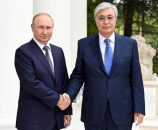Syeda Mazhar
After 13 years of dictatorship, Pakistan was finally going in for the first ever democratic elections held across the country, in March 1971. Bhutto; representing West Pakistan, and Mujeeb Ur Rehman; representing East Pakistan (Bengal), were the main candidates standing for the elections. As Bengalis enjoyed the majority population of Pakistan, it was no surprise that Mujeeb’s party, Awami League won the elections.
Although the Pakistani elections were of no concern to the other countries, India had been taking great interest in the Pakistani politics and also welcomed the victory of Mujeeb ur Rehman with open arms. The Awami League was openly declaring its resolution to separate Bengal from Pakistan, and this added fuel to India’s interest in the Pakistani elections, and its support for Awami League was nothing less than fire.
In April 1971 Bengal had not on only officially formed Mukti Bahini, but it had also infiltrated every department and part of East Pakistan. It had taken over the Pakistani arms depots and had a good supply of weapons from there. They also had the naval supplies from ports in Chittagong, Chandpur and Narayanganj, and sunk 26 naval vessels. That being said, Mukti Bahini also received a large number of military supplies from the Indian army; some were bought whereas others were received as aid to help Bengalis ‘fight for their rights’.
Although India did not officially declare war for the longest time, it did however help Mukti Bahini in spreading separatist hatred. Numerous private accounts of the people of the insurgent army reveal that there had been a lot of close contact between them and the Indians. The accounts also revealed how a lot of actions resulting in chaos and mutiny were often if not performed, then at least directed and planned by Indian officials.
Indian officials had a closer eye on Pakistani politics than many could even imagine. Sources reveal that in January 1971, two months before the actual elections even took place, B.K. Acharya in New Delhi suggested that if Mujeeb’s 6 points wouldn’t secure their autonomy in the constitution, there would be a high possibility of a separatist movement starting in the Eastern wing of Pakistan. R.N. Kao, head of India’s Research and Analysis Wing (RAW)also predicted that emancipation from Pakistan had been in a part of Mujeeb’s agenda for quite some time and that it expected to happen soon.
In the period between July and November, Mukti Bahini took over the resources of Pakistan in the Eastern wing very tactfully. They sabotaged and raided Pakistani installations and took over military posts, power plants, industries and other important departments. The guerilla force made every possible effort to cripple the system to an extent that it is not under any control from West Pakistan.
In early March 1971, as instructed by Mujeeb, Tajuddin Ahmed (freedom fighter) had a secret meeting with Indian Deputy High Commissioner K.C. Sen Gupta in order to discuss asylum for Bengalis in case a fully fledged war takes places. He also asked for political collaboration and financial backing for the operation to take place smoothly. The inhabitants at the India-Bengal borders were willing to help and give refuge to the refugees in the war.
A book by the scholar Srinath Raghavan, known as ‘1971’, shows another side of the story. Digging deeper we find that the 14 day war between India and Pakistan was not as simple as we are often made to believe. India received aid in form of arms from Israel. Although India voted against Israel in 1948, and sided with Palestine; the Indian ambassador to France started writing to Israeli Prime Minister in July 1971. Israeli Prime Minister Golda Mier wrote to Indra Gandhi and said that Israel expects diplomatic ties in return for the arms that were diverted from Iran to India.
Sources also reveal that although the direct Indian army attack on East Pakistan was made on 20/21 November, India had already devised and planned the war long ago in April 1971. Indra Gandhi being the PM visited USA, pretending to be seeking a peaceful resolution to end the war. The fact remains that everything that was happening had been planned and plotted months ago.
Many undercover ‘volunteers’ reported that Mukti Bahini training camps were set in India and Indian army was keen on training them for guerilla as well as mainstream warfare. Besides that Mujeeb’s party had direct assistance from India, the Bengalis (mostly Hindus) were guaranteed asylum and the insurgents were provided weapons. India was not alone in the picture; Israel also played its part in supplying weapons in exchange for diplomatic relations (which did not take place until 1992).
India and Mukhti Bahini collaborated and played well. Innocents were killed, students were attacked and Pakistan Army was blamed. The fact that even West Pakistanis were not spared, is an obvious sign of who was really behind the mass murder and rape taking place across East Pakistan.


